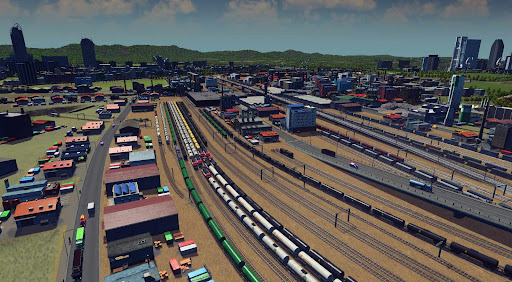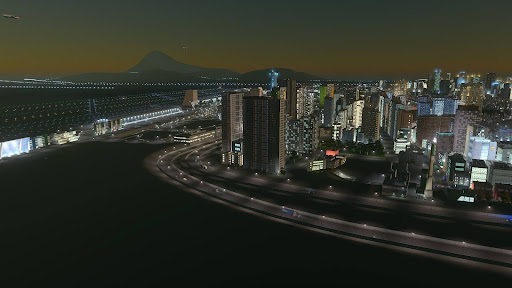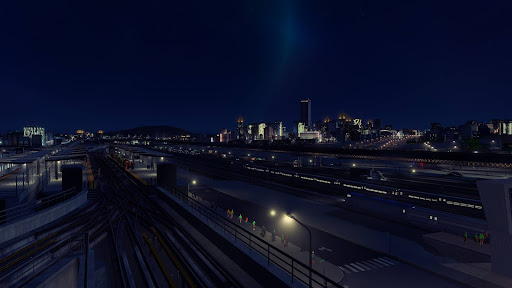I’ve been playing city building games since I was a child. Way back with SimCity 2000. My very first game I purchased with my own money was SimCity 3000, and I must’ve clocked over 5,000 hours of it back then. Hell, I used to want to be a city architect when I was younger! I had a pretty big knack for just building things, from putting together different Legos, to Erector Sets, to Hot Wheels racetrack configurations. I absolutely loved just putting whatever wild ideas I had in my head to life.
City builders were the perfect combination of all of those things. If I wanted to put together an elaborate highway interchange, I could do that. If I wanted to have a massive industrial train yard, I could get it done in an hour.

The possibilities were limited only by the constraints the game presented, but that would soon be a very small issue as games naturally became more and more robust. Simcity 4 was the big turning point for these games, as it was also the first game to truly and properly present mods to the game. I didn’t think much of mods at the time because, well, why would I? Mods had this weird stigma back then; they were these dangerous, untested, “use at your own risk” applications that could irreversibly destroy your game. I don’t know if that was the “MissingNo.” effect, but it just gave me more pause when wanting to try them.
Then I started wanting more out of my game, and I was getting closer and closer to the game’s limitations. Still, I did what I could to get my creative juices flowing. I did more and more to my cities, having a particular interest in elaborate subway and metro systems. SimCity 4 was an excellent game that probably paved the way for my future in this genre, but I couldn’t really do everything I wanted with it. Small things, such as the overall size of cities, the finicky multi-city resource transfer and mass transit subtleties, and the general lackluster building designs started to take me out of it. I wasn’t unhappy with the game, I just craved more and more.
Then, in March, 2015, Cities: Skylines was released.
This was the first true city builder that fully supported mods from the get-go. It was also the first city builder to allow for in-engine modifications, though this wouldn’t be too relevant for a couple of years. The mods that would come out for the game would fundamentally change the way you could play. The core game itself wasn’t quite as in depth and fleshed out as its SimCity 4 counterpart, but the amount of things you could mod into it made it not matter for the most part.
Emphasis on most.
From here on, Cities: Skylines would be my go-to game whenever I wanted to just relax and do stuff. If I had an idea for a simplistic residential area surrounded by highways, a la Queens, New York, I could just do that. But this time, I could also go really deep and do things like control how often express trains would go into a train station, while also making sure local trains don’t stuff up traffic, but also allow shuttle trains to come in when bus routes are out of service due to construction! The world was truly my oyster, and was limited only by my imagination
…and the amount of RAM on my PC.

One of the bigger issues of Cities: Skylines in general was that you were effectively hard capped on how many mods you could actually run; and back then, not many of us were afforded more than, say, 8 gigs of RAM. Combined with the fact that mods weren’t exactly the most optimized or fleshed out, and the issue of the troubleshooting process being extremely tedious and arduous if the slightest thing went wrong (and still persists to this day), and you were in for a ride if you went over your limit even a little bit.
The extra layer to this problem was that you really didn’t know if you were going to mess things up until you booted up your game file. This isn’t much of an issue nowadays, as there are mods available to quite literally keep track of your mods and and processes. But even still, it’s quite easy to just break things and be forced to start all over, which would be a nightmare for some builds that you put a lot of time into. This also becomes an issue when mods depreciate over time, or outright stop being supported.
You can also be limited by the core of the game itself. In extreme situations, the game can only handle so many assets in your city at once (I believe about 64,000). Any more, and certain critical assets straight up disappear or stop working. Even weird things like clicking on a train station will cause all trains designated to stop at that station to vanish. Despite all this, I was still willing to go through it, because it was that good. Mods in games enrich the experience so much, even through its problems.
It honestly baffles me how one of the stigmas of mods is that they shouldn’t be necessary for games because games should be “complete.” My thought is that if a game isn’t complete, then the majority of them wouldn’t be released in the first place. What’s complete to the people who make the game isn’t synonymous with what could be added on top of things down the line. Just because a game has ways to enhance the experience, doesn’t mean it isn’t done. Cities: Skylines is a perfect example of a game that has been enriched and overhauled completely because the modding community cares so much about making the game as good as it can be for the player.

Cities: Skylines is the best city builder out right now. The amount of customizability you can have at your hands is near-infinite, and you can curate things to befit the experience you desire. If you want to play the different scenarios and just play a Mayor, or just go completely freedom mode and do intricate city design and spend a hundred hours on a single highway intersection (don’t judge me). This game is for you!

